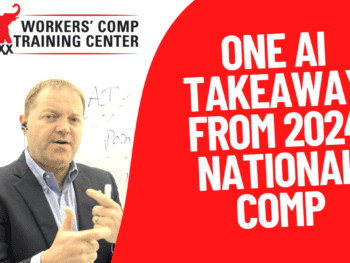
1. Exclusivity: Protection Against Lawsuits
One of the most significant benefits of workers’ compensation for employers is the “exclusive remedy” provision. Under this system, employees who accept workers’ compensation benefits for a work-related injury or illness forfeit the right to sue their employer for negligence.
How It Works
If an employee sustains an injury at work, they are entitled to receive compensation for medical expenses, wage loss, and rehabilitation through the workers’ compensation program. In exchange, the law prevents employees from bringing legal action against the employer, even if the employer’s negligence contributed to the injury. This arrangement, often referred to as the “workers’ compensation bar,” is designed to provide a fair resolution for both parties:
- For employees, it ensures a no-fault system where benefits are guaranteed without needing to prove the employer’s liability in court.
- For employers, it mitigates the risk of expensive and protracted litigation that could arise from workplace injuries.
Employer Advantages
The exclusivity rule saves employers from significant financial and reputational risks. Litigation, especially in cases of workplace accidents, can be costly and time-consuming. Legal battles also often disrupt business operations and negatively impact workplace morale. By participating in the workers’ compensation system, employers can avoid these challenges, maintain focus on their business goals, and foster a stable work environment.
Click Link to Access Free PDF Download
2. Budgeting and Cost Management
Another key benefit for employers is the ability to budget and plan for the financial impact of workplace injuries. Workers’ compensation provides a structured approach to managing the costs associated with employee accidents and work-related illnesses.
Predictability in Costs
Workers’ compensation insurance can transfer a portion of the financial risk associated with workplace injuries to the insurance company. Employers pay premiums for this coverage, enabling them to forecast and plan for these costs more effectively. By doing so, businesses can protect their financial health and allocate resources to other priorities, such as growth initiatives and employee development.
Premiums Reflect Risk
While workers’ compensation provides predictability, it is not free. Employers bear the cost of premiums and may also pay retained losses, such as deductibles, depending on their coverage structure. These costs are often influenced by an employer’s history of claims:
- Guaranteed Cost Plans: Employers with these plans pay a fixed premium based on their past loss experience, ensuring that costs are manageable and predictable.
- Impact of Prior Claims: An employer’s premium reflects the number and severity of past claims, incentivizing investment in safety programs and proactive risk management to reduce claims over time.
Why This Matters
Without workers’ compensation insurance, employers could face unpredictable and potentially catastrophic financial exposure. A single significant workplace injury could result in unplanned medical expenses, wage replacement, legal fees, and other costs, which could severely strain or even bankrupt a small business. Workers’ compensation provides a financial safety net that helps businesses avoid these outcomes.
Long-Term Cost Benefits
Employers who prioritize safety and reduce workplace injuries benefit from lower workers’ compensation premiums over time. Implementing robust safety programs, fostering a culture of accountability, and addressing potential risks proactively can minimize claims and associated costs, ultimately driving down premiums.
Balancing the Benefits with Responsibilities
While workers’ compensation offers critical protections for employers, it comes with responsibilities:
- Maintaining Compliance: Employers must comply with their state’s workers’ compensation laws, which often mandate carrying insurance for employees.
- Investing in Safety: Minimizing workplace injuries through effective safety programs reduces claims and keeps costs manageable.
- Managing Claims Effectively: Timely reporting and efficient management of claims ensure smoother operations and better outcomes for employees and employers alike.
FREE DOWNLOAD: “Step-By-Step Process To Master Workers’ Comp In 90 Days”
Conclusion
Workers’ compensation is often called “The Grand Bargain” between employers and employees. Employers gain protection from lawsuits and the ability to manage workplace injury costs predictably, while employees receive guaranteed benefits for work-related injuries without the need for litigation. By understanding and leveraging these benefits, employers can not only safeguard their financial health but also create a safer, more supportive work environment for their teams.
For employers, the exclusivity provision provides peace of mind and shields them from the financial and operational disruptions of litigation. The budgeting benefit, on the other hand, ensures financial predictability, enabling employers to focus on long-term goals. Together, these advantages make workers’ compensation a critical component of modern workforce management.
If you’d like more insights into cost management or enhancing workplace safety, explore additional resources like WC Mastery Training to optimize your workers’ compensation program.

Contact: mstack@reduceyourworkerscomp.com.
Workers’ Comp Roundup Blog: http://blog.reduceyourworkerscomp.com/
Injury Management Results (IMR) Software: https://imrsoftware.com/
©2024 Amaxx LLC. All rights reserved under International Copyright Law.
Do not use this information without independent verification. All state laws vary. You should consult with your insurance broker, attorney, or qualified professional.
FREE DOWNLOAD: “Step-By-Step Process To Master Workers’ Comp In 90 Days”
















